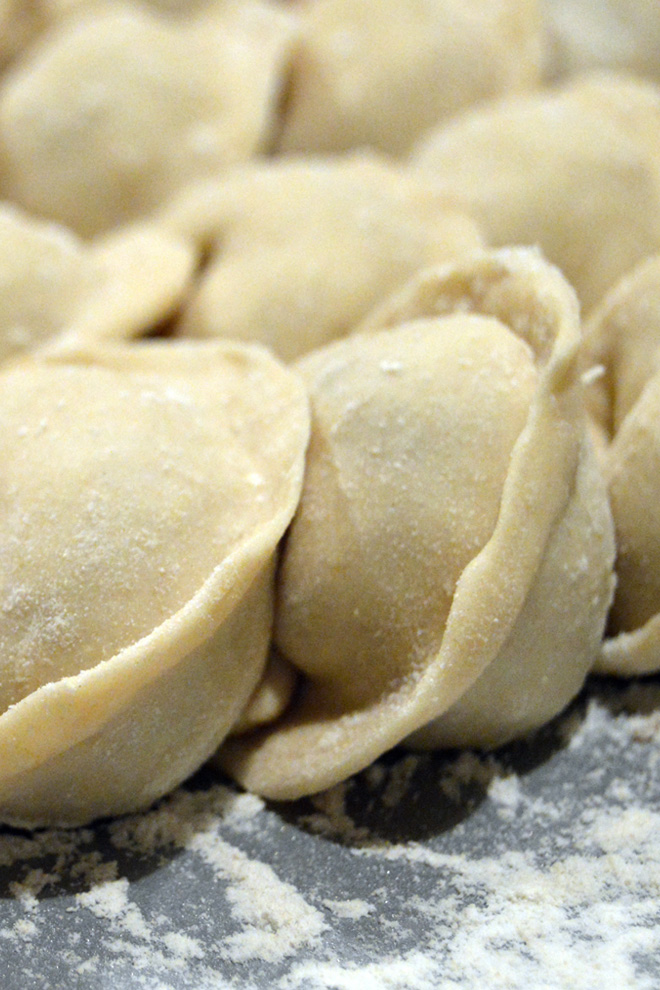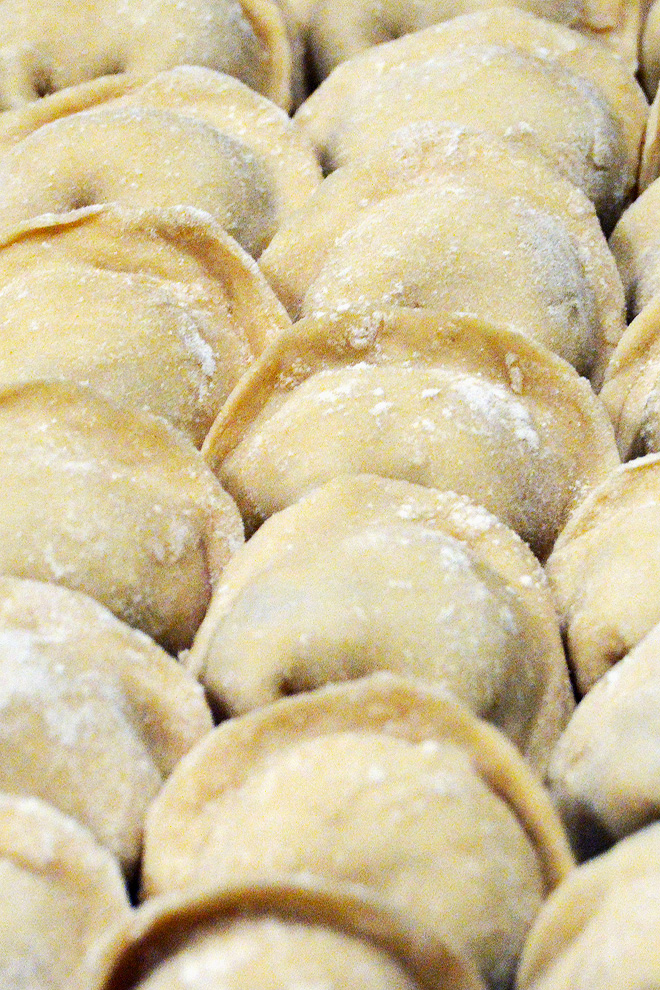Ciasto na Pierogi ze Śmietaną
Pierogi Dough with Sour Cream (Just 2 Ingredients!)
How to pronounce it?
chia-stoh na pierre-oghee seshmietanom
‘Play’ to hear:

Pierogi Dough with Sour Cream is a popular alternative to a more traditional recipe. All you need is two ingredients: cream and flour – that’s it!
These pierogi wrappers are soft and tender, with a pleasant silky mouthfeel. If you tried making homemade pierogi before, but you struggled to form the dough – this recipe is for you!
For the full list of ingredients & detailed instructions, please see the recipe card at the end of this post. But before you scroll, there’s important stuff to know below.
For more options, have a look at other Pierogi Dough recipes. Are you ready to choose the stuffing? Check out the following post:
Do you need any special ingredients to make this Pierogi Dough with Sour Cream?
No. There are only two ingredients in this recipe: flour and sour cream.
Sour Cream can be replaced with buttermilk or thick natural yoghurt.
What dishes can you make with this Sour Cream Pierogi Dough?
Pierogi Dough with Sour Cream goes well with any kind of stuffing. It goes especially well with meatless fillings, such as ‘Ruskie’ Potato & Cheese.
The same dough can be used for ‘Uszka’ (tiny dumplings served in Red Barszcz Soup).
Can you make this Pierogi Dough another way?
Not really. As I mentioned in the ‘ingredients’ section, sour cream can be swapped for buttermilk or thick natural yoghurt.
You could use a mixer to knead the dough – but doing it by hand is so easy… it isn’t worth taking the equipment out.
What diets is this Sour Cream Pierogi Dough suitable for?
This recipe is suitable for vegetarians.
How long can you keep this Pierogi Dough in the fridge?
You can keep this Pierogi Dough in the fridge for up to 2 days, wrapped in cling film. If you’re not planning to use it within that time frame, it’s better to freeze it instead.
Can I freeze this Pierogi Dough with Sour Cream?
If you’re making this dough with the intention to freeze it – I wouldn’t recommend doing that. It’s better to make it fresh.
To freeze the leftover dough, just form a ball and wrap it in cling film. Label it with a description and date. Consume within 3 months. When needed, thaw it in the fridge overnight.
FAQ and Troubleshooting
🤔 Why use Sour Cream in Pierogi Dough?
While there is no Sour Cream in the Traditional Pierogi Dough recipe, this method became popular in recent years. You’re not likely to find it in cookbooks, but Polish home cooks swear by it, sharing this recipe on the internet forums.
Here’s why it’s worth using sour cream in pierogi dough:
- Thanks to sour cream, the dough feels smoother and kneads easier.
- There’s no need to handle near-boiling water. Many struggle with the traditional recipe because of this, hot water burns them while kneading.
- This Sour Cream Pierogi Dough is easy to make. The success rate is high, even at the very first attempt. Here’s a quote from a Polish forum: “Thanks to this recipe, I conquered my pierogi-making phobia”.
There are drawbacks to this method though. The high-fat content (usually 18%) of sour cream makes the dough very delicate. It breaks easily when pressing through a pasta press, so you’ll have to stick to using a traditional rolling pin.

Pierogi Dough with Sour Cream (2-ingredient)

This Pierogi Dough with Sour Cream makes pierogi-making a bliss. And two ingredients is all you need! Once you try this recipe, you’ll never buy any ready-made dumplings from a store.
Ingredients
- 4 cups (500 g) all-purpose flour
- 14.5 oz (400 ml) Sour Cream
- a few more pinches of flour (for kneading)
Instructions
- Tip four cups of flour onto your work surface, make a shallow well.
- Add sour cream in. Mix until combined - with your hands or with an electric mixer.
- If the dough feels too sticky to handle, add more flour.
- Dust both hands with flour and start kneading to form the dough.
- Cover the dough with a cloth or a large bowl. Set aside for 20-30 minutes. You can let the dough rest longer, even up to a few hours.
- Dust the worktop with some extra flour and transfer the dough onto it. Knead the dough for a minute or two. Cut a smaller piece of the dough off and roll it out - the thinner, the better.
- Cut out the circles - I use a rim of a glass, but a round cookie cutter works too. The size is up to you, but roughly 3 inches (8 cm) seems optimal.
- Scoop 1 tablespoon of pierogi filling of your choice and place it in the center of each circle.
- Press the edges and seal each dumpling.
- Bring a large pot of water to boil, then reduce the heat to medium. Drop in pierogi in small batches, a few at the time. Wait for them to float, once they do - continue cooking for another minute. Remove them with a slotted spoon onto a plate.
- Continue until you’re out of pierogi.
- Serve with melted butter or another topping of your choice.
- If you prefer a crispier skin, melt some butter on a frying pan. Fry dumplings on both sides until golden.
Notes
- Here's a link to forum thread (in Polish) about this recipe.
Nutrition Information:
Yield:
60Serving Size:
8Amount Per Serving: Calories: 55Total Fat: 3gSaturated Fat: 2gTrans Fat: 0gUnsaturated Fat: 1gCholesterol: 8mgSodium: 2mgCarbohydrates: 7gFiber: 0gSugar: 0gProtein: 1g
Polonist is reader-supported. When you buy through links on our site, we may earn a small affiliate commission. Learn more
Recipe Information
Filed under:
Alternative traditional/regional names:
Also known / Misspelt internationally as:
Tested by:
First published on:
Recipe by / Adapted from:
Story by:
Bibliography / References: